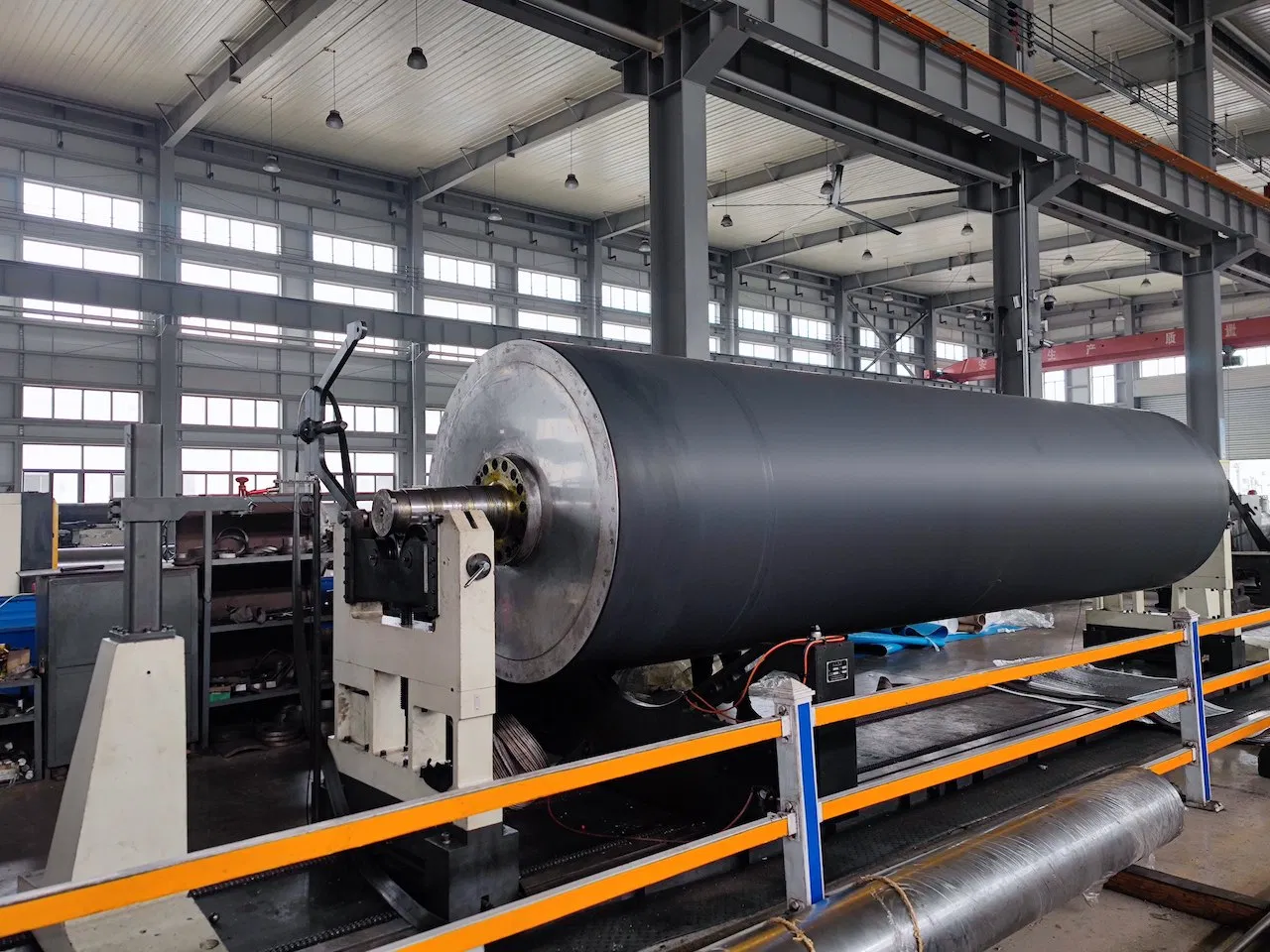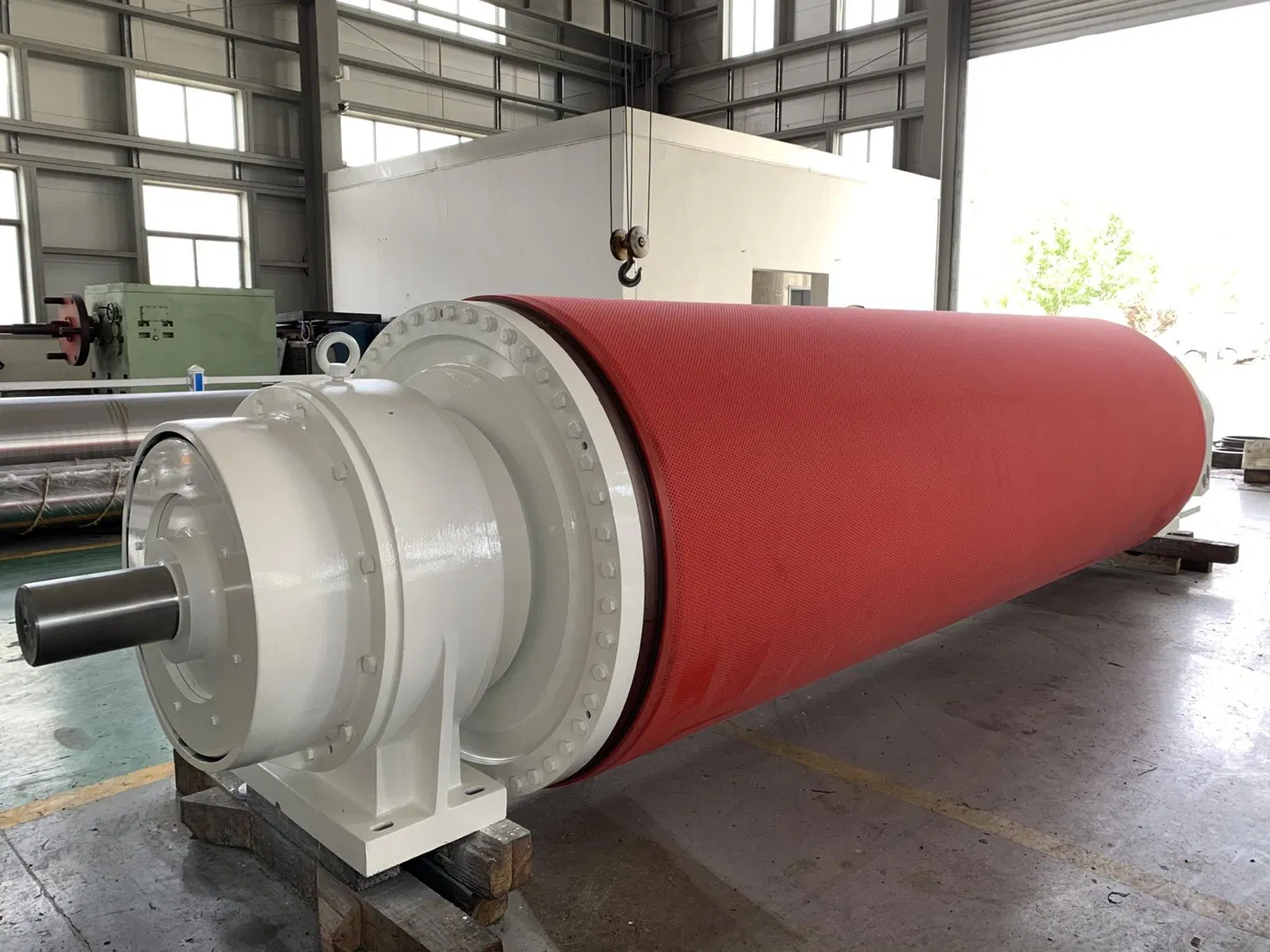In the highly competitive world of paper and board manufacturing, efficiency is not just a goal; it's the cornerstone of profitability. Every component on the paper machine plays a critical role, but to be honest, few have as direct an impact on dewatering and sheet quality as the press section. Within this section, the press roll stands as a pivotal piece of technology. However, a generic, off-the-shelf roll is often a compromise. This is where the concept of a Customized Blind Hole Press Roll Supply moves from a simple equipment purchase to a strategic, tailored solution for your mill’s unique operational challenges and goals.
The difference between a standard roll and a customized one can be the difference between meeting production targets and consistently exceeding them. It’s about moving beyond a one-size-fits-all mentality and embracing a solution engineered specifically for your machine, your furnish, and your final product. Let's delve into what makes this customized approach not just a luxury, but a necessity for the modern mill.
Deconstructing "Customized": What a Tailored Blind Hole Press Roll Truly Entails
The word "customized" is used frequently in industrial marketing, but what does it genuinely mean in the context of a blind hole press roll? It's far more than simply matching a diameter and face length. A truly tailored solution involves a deep, multi-faceted engineering process where every variable is optimized for a specific application. In my experience, this level of detail is what separates a good roll from a great one.
Core and Shell Material Selection
The foundation of any roll is its core. The choice of material—be it ductile iron, forged steel, or a specialized alloy—is dictated by the required nip pressures, machine speeds, and corrosive environment of your mill. A high-speed machine producing lightweight paper will have vastly different structural demands than a machine producing heavy linerboard. Customization ensures the roll's core has the necessary stiffness and durability to operate reliably under your specific load conditions, preventing deflection and ensuring a uniform nip profile.
The Science of the Roll Cover
The roll cover is the interface between the machine and the paper web. A tailored solution means selecting a cover material (polyurethane, rubber, or composite) with precisely the right properties:
- Hardness (P&J): A softer cover might provide a wider, gentler nip, ideal for bulk-sensitive grades. A harder cover, conversely, generates higher specific pressure for maximum dewatering on grades where this is the priority. The target hardness is customized to your mill's product mix.
- Chemical Resistance: The specific chemistry of your white water system dictates the ideal cover composition to prevent chemical degradation and swelling.
- Abrasion Resistance: For mills using abrasive fillers like calcium carbonate or recycled fiber with contaminants, a cover with high abrasion resistance is essential for maintaining the roll profile and extending service life.
Precision in the Blind Hole Pattern
This is perhaps the most critical aspect of customization. A generic drilling pattern is a significant performance compromise. A tailored solution optimizes every facet of the blind hole design:
- Hole Diameter and Depth: These determine the void volume available to accept water pressed from the sheet. This must be calculated based on the incoming sheet moisture, machine speed, and nip dwell time.
- Hole Spacing and Open Area: The percentage of open area on the roll surface is a delicate balance. Too little, and dewatering is inefficient. Too much, and you risk shadow marking and reduced cover strength. The optimal pattern is tailored to prevent these issues while maximizing water removal.
- Drilling Angle: Interestingly enough, even the angle of the holes can be customized to facilitate water evacuation and cleaning, further enhancing performance.

The Critical Function of Blind Hole Design as a Tailored Solution
Why focus so intently on the blind hole design? Because it is the engine of dewatering in this type of press roll. Unlike a suction roll that uses a vacuum, a blind hole roll relies on hydraulic pressure. As the paper web and felt pass through the nip, water is squeezed out and forced into the thousands of small holes, or reservoirs, drilled into the roll cover.
As the roll rotates out of the nip, centrifugal force and the expansion of the compressed cover material expel the water, which is then typically collected by a doctor blade. This elegant mechanical process is highly effective, but only when the system is designed as a cohesive, tailored solution for your mill. A poorly designed system can lead to a host of problems that a custom approach directly solves.
Solving the Rewetting Problem
One of the biggest challenges in any press section is rewetting—when water that has been expelled from the sheet is reabsorbed as it exits the nip. A customized blind hole roll addresses this by ensuring the void volume is sufficient to contain all the expressed water until the roll surface has fully cleared the nip. If the holes are too shallow or too few for your machine's speed and water load, they will fill up and allow water to flow back into the sheet and felt. This is a classic example of where a "standard" roll fails.
Eliminating Shadow Marking
Shadow marking is a defect in the paper that mirrors the pattern of the holes on the press roll. It's caused by non-uniform pressure distribution over the roll's surface. A tailored solution mitigates this by optimizing the hole size and spacing to ensure the "land area" between the holes provides uniform support to the sheet. For high-quality printing and writing grades, eliminating this defect is non-negotiable, and customization is the only reliable way to achieve it.

From Mill Assessment to Supply: The Journey of a Customized Roll
Supplying a customized blind hole press roll is not a transaction; it's a collaborative engineering project. The process is designed to ensure the final product is a perfect fit for its intended application. It’s worth noting that the success of the final roll is directly proportional to the quality of the initial assessment.
Step 1: In-Depth Mill Consultation
The process begins with our team engaging directly with your mill's production, maintenance, and engineering personnel. We don't just ask for roll dimensions. We seek to understand your pain points. Are you struggling with low felt life? Is steam consumption in the dryer section too high? Are you experiencing sheet quality issues? We gather critical data on:
- Machine position and configuration
- Current operating speeds and nip loads
- Paper grades and furnish composition
- Existing operational problems and performance goals
Step 2: Engineering and Design
With this data, our engineers get to work. Using advanced modeling and calculation software, they design a roll from the ground up. This includes determining the optimal crown (the slight curvature of the roll face) needed to compensate for deflection under load, ensuring a perfectly uniform pressure profile across the entire sheet. Every aspect, from the core material to the final drilling pattern, is specified in a detailed engineering drawing that becomes the blueprint for your tailored solution.
Step 3: Manufacturing and Rigorous Quality Control
Once the design is approved, manufacturing begins. This phase is governed by strict quality control protocols. The roll core is machined to precise tolerances. The cover is applied, cured, and then ground to the exact profile and surface finish required. Finally, the blind holes are drilled using computer-numerical control (CNC) machines to guarantee perfect accuracy and consistency across the entire roll face. Every step is documented and verified.
Step 4: The "Supply" Component: Logistics and Support
The "supply" part of our service extends beyond just shipping a product. It includes robust logistics planning to ensure the roll arrives safely and on schedule for your planned shutdown. Furthermore, our commitment doesn't end at the loading dock. We provide support during installation and startup to ensure the roll performs as designed from day one.
The Tangible Mill Benefits of a Truly Tailored Press Roll Solution
So, what is the ultimate return on investment for a customized blind hole press roll? The benefits are tangible, measurable, and directly impact your mill's bottom line.
Many experts agree that the single biggest benefit is improved dewatering efficiency. Even a 1% increase in sheet dryness exiting the press section can translate to a 4-5% reduction in steam consumption in the dryer section—often the most energy-intensive part of the entire papermaking process. Over a year, these energy savings can be substantial.
Beyond energy, a tailored roll leads to:
- Increased Production: By dewatering more effectively, machine speeds can often be increased without compromising sheet quality, leading to a direct increase in tonnes produced per day.
- Enhanced Sheet Quality: A uniform nip and the elimination of issues like shadow marking result in a higher quality final product with better smoothness and printability.
- Longer Component Life: A properly designed roll and cover combination, tailored to your specific conditions, leads to longer operational life for both the roll cover and the press felts, reducing maintenance costs and downtime.
Ultimately, a customized roll is not an expense; it's an investment in your mill's operational excellence and long-term profitability. After all, isn't achieving peak performance the goal for any modern manufacturing facility?
For more detailed information, please visit our official website:customized press roll
About the author: Jonathan Kress is a Senior Application Engineer with over 20 years of experience in the pulp and paper industry. Specializing in paper machine optimization and press section technology, he has helped dozens of mills across the globe improve their efficiency and product quality through the implementation of tailored roll solutions. Jonathan is passionate about bridging the gap between advanced engineering principles and practical, real-world mill operations to drive tangible results.


